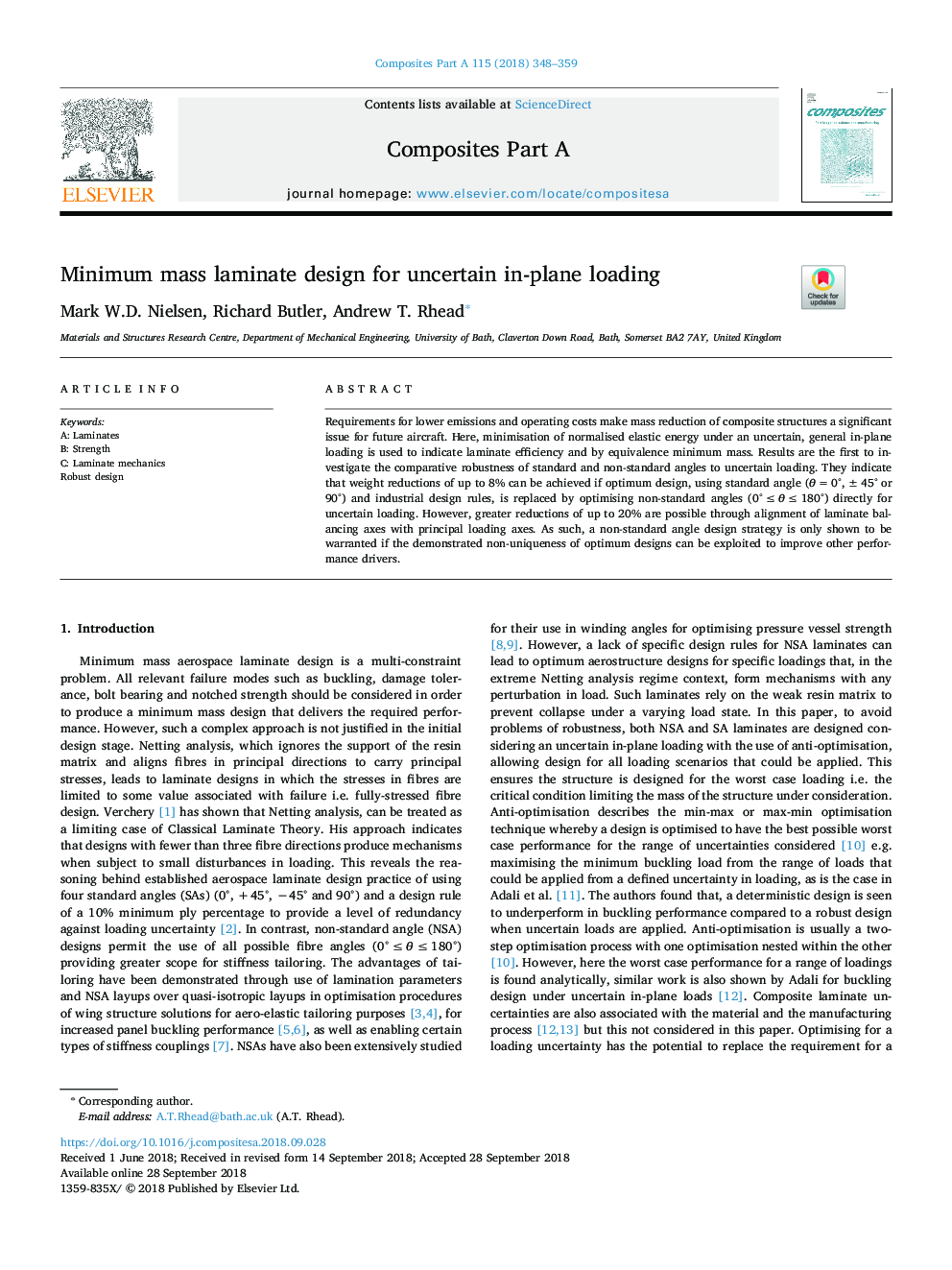| Article ID | Journal | Published Year | Pages | File Type |
|---|---|---|---|---|
| 11263603 | Composites Part A: Applied Science and Manufacturing | 2018 | 12 Pages |
Abstract
Requirements for lower emissions and operating costs make mass reduction of composite structures a significant issue for future aircraft. Here, minimisation of normalised elastic energy under an uncertain, general in-plane loading is used to indicate laminate efficiency and by equivalence minimum mass. Results are the first to investigate the comparative robustness of standard and non-standard angles to uncertain loading. They indicate that weight reductions of up to 8% can be achieved if optimum design, using standard angle (θâ¯=â¯0°, ±45° or 90°) and industrial design rules, is replaced by optimising non-standard angles (0°â¯â¤â¯Î¸â¯â¤â¯180°) directly for uncertain loading. However, greater reductions of up to 20% are possible through alignment of laminate balancing axes with principal loading axes. As such, a non-standard angle design strategy is only shown to be warranted if the demonstrated non-uniqueness of optimum designs can be exploited to improve other performance drivers.
Keywords
Related Topics
Physical Sciences and Engineering
Materials Science
Ceramics and Composites
Authors
Mark W.D. Nielsen, Richard Butler, Andrew T. Rhead,
